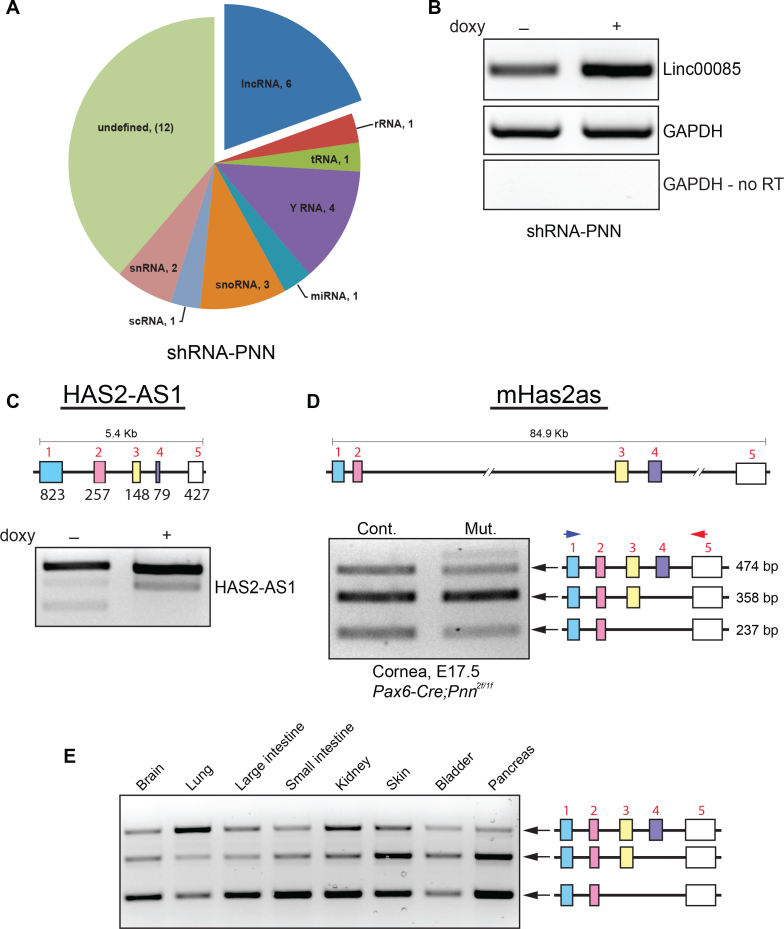Figure 1.
Induced knockdown of Pnn in HCET cells resulted in altered expression of an array of non-coding RNAs, including long-non-coding RNAs. A: Doxycycline-inducible shRNA-mediated PNN knockdown in human corneal epithelial cells led to the altered expression of specific subsets of ncRNAs, including a subset of lncRNAs, along with snRNA -U RNA, snoRNA, small non-coding components of Ro60 ribonucleoprotein particle (y RNA), rRNA, tRNA, miRNA microRNA, and scRNA small cytoplasmic RNA (7S). B: The increased expression level of Linc00085, seen in the transcriptomic array, was independently validated in RNA from PNN-knockdown human corneal epithelial (HCET) cells with real-time–PCR (RT–PCR). C: The change in splicing isoforms of lncRNA, HAS2-AS1, as demonstrated on the Affimetrix transcriptome-arrays, was verified through isoform-specific RT–PCR and sequencing analyses. D: Conditional knockout of Pnn in developing mouse cornea epithelium led to specific changes in the splicing pattern of mHas2as, the mouse ortholog of human HAS2-AS1. The epithelia from the lens-Cre knockouts demonstrated a decrease in the mHAS2AS1 isoform containing exon 1–5 and isoform containing exons 1, 2, and 5 (see Appendix 1). D: Splicing patterns of mHas2as was examined in multiple different mouse tissues. All tissues tested exhibited a differential splicing pattern across the three major splice variants, suggesting significant normal variations on mHAS2-AS1 across differing tissues and cell types, suggestive of tissue-specific splicing regulation.

